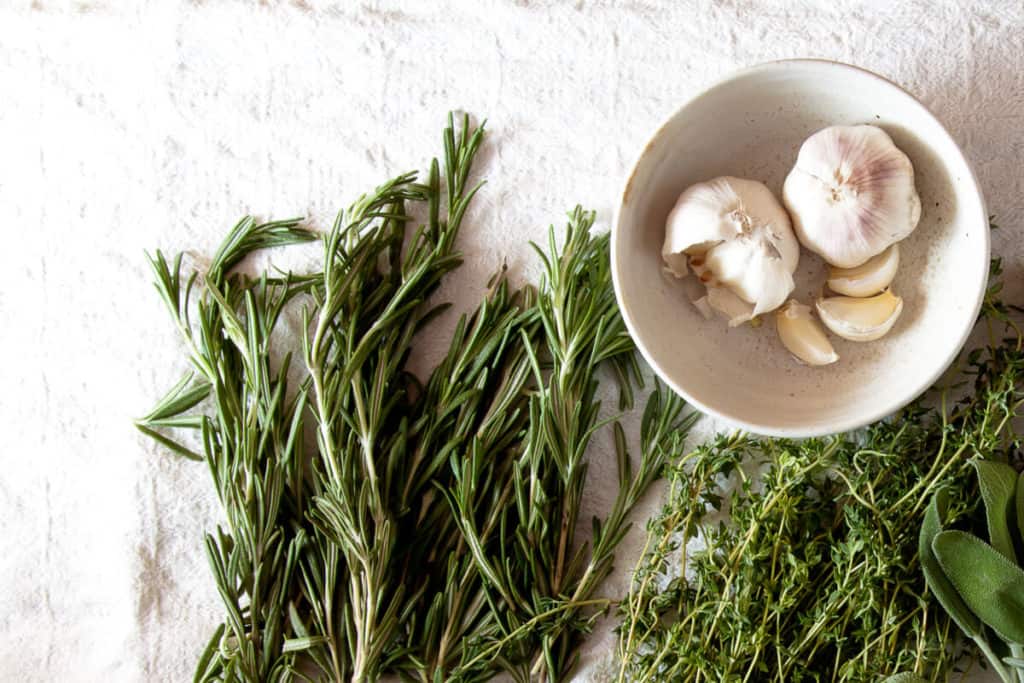Consider this from the journal Nature Reviews Microbiology:
- If all the viruses that exist in the world were positioned end to end, they would stretch for 100 million light-years—that’s 20,000 years times a million.
- There are 100 million more bacteria in the oceans than there are stars in the universe—and that’s just the oceans.
- The number of microbes in a teaspoon of soil is approximate to the number of people living on the continent of Africa—more than a billion.
- One gram of dental plaque is densely packed with so much bacteria, it’s equivalent to the number of humans that ever lived—that’s less than a tablespoon of plaque. (1)
Antimicrobial definition
The dictionary defines an antimicrobial as an agent that inhibits and destroys the growth of microorganisms such as bacteria, viruses, and fungi. Examples include antimicrobial sprays that contain tea tree oil or neem to treat athlete’s foot or antimicrobial ointments with lemon balm to suppress cold sores. (5)
Antimicrobial versus antibacterial
While the terms antimicrobial and antibacterial are often interchangeably, there is actually a significant difference between the two. Antibacterial is a sub-category of antimicrobial. Antibacterial agents only target the growth of bacteria, while antimicrobials inhibit and destroy microbes including bacteria, fungi, and viruses. (13)Antimicrobial resistance
While antibacterial drugs have saved lives, the overuse of these pharmaceuticals (e.g. antibiotics) in humans and agriculture has led to the dangerous issue of antimicrobial resistance. (4)The Centers for Disease Control and Prevention (CDC) identifies antimicrobial resistance as one of the biggest public health challenges of our time. At least 2.8 million Americans are diagnosed with an antibiotic-resistant infection, accounting for more than 35,000 deaths each year. (3)
What’s worse, despite efforts to reverse the trend, antimicrobial resistance shows no signs of slowing down and has become quite costly, resulting in about $20 billion in direct healthcare costs in the United States and about $35 billion in loss of American productivity each year. (4)
The goal of antimicrobial therapy is to not only inhibit or destroy the infecting organism without causing harm to the host but also to lessen the damaging cycle of antimicrobial resistance. Using antimicrobial products wisely and employing natural alternatives to prescription drugs is a strategy worth considering.
Antimicrobial products
As the issue of harmful microbes has become so prominent, the influx of various antimicrobial products has grown exponentially. From antimicrobial mouthwash to antimicrobial soap and antimicrobial spray, many products are now readily available. In fact, there is even antimicrobial fabric used for facemasks.One key area of focus for integrative practitioners is recommending dietary supplements that contain ingredients that demonstrate antimicrobial activity.
Natural antimicrobials
As with many health challenges, Mother Nature provides a number of natural antimicrobials such as spices. Based on the scientific literature, certain spices exhibit antibacterial and antifungal activity, such as: (9)- Clove against Staphylococcus aureus (S. aureus) and Escherichia coli (E. coli)
- Clove, cardamom, and cinnamon against 13 bacterial strains, 7 molds, and 2 yeasts
- Cumin against E. coli, several S. aureus strains, and many fungal isolates
- Garlic against E. coli, Streptococcus thermophilus, and several food-borne microorganisms
- Oregano against different types of salmonella, E. coli, and several Candida strains
- Rosemary against E. coli and Candida albicans
- Thyme against E. coli and several S. aureus strains

Additionally, vitamin C not only has direct antimicrobial activity, but it has also been shown to enhance the antibacterial potency of other agents by destabilizing bacterial biofilms making those cells easier to destroy. (12) A 2020 study showed that the addition of 100 mg of vitamin C significantly enhanced the antibacterial effects of honey against S. aureus compared to honey alone. The researchers speculate that vitamin C helped trigger the intracellular production of reactive oxygen species inside the bacteria to hasten cell extinction. (11)
Vitamin D also has potent antimicrobial activity and has been shown to be effective against E. coli, Helicobacter pylori, and several S. aureus infections. (6)
The bottom line
The ubiquitous nature of microbes in our universe may seem overwhelming, but as our understanding of these organisms expands, so do our treatment options. To help reverse the dangerous trend of antimicrobial resistance while increasing the chances of clinical efficacy, a more natural approach is warranted. Nature’s antimicrobial pharmacopeia provides many options including spices, herbs, and nutrients.If you’re a patient who is considering taking an all-natural antimicrobial, be sure to speak with your integrative healthcare practitioner for recommendations specific to your unique health needs.
- Author unknown. (2011). Microbiology by numbers. Nature Reviews Microbiology, 9, 628. https://www.nature.com/articles/nrmicro2644
- Bloom, D. E., & Cadarette, D. (2019). Infectious Disease Threats in the Twenty-First Century: Strengthening the Global Response. Frontiers in immunology, 10, 549. https://www.ncbi.nlm.nih.gov/pmc/articles/PMC6447676/
- Centers for Disease Control and Prevention. (2020, July 20). Antibiotic/ Antimicrobial Resistance (AR/AMR). https://www.cdc.gov/drugresistance/index.html
- 8 & 10 Dadgostar P. (2019). Antimicrobial Resistance: Implications and Costs. Infection and drug resistance, 12, 3903–3910. https://www.ncbi.nlm.nih.gov/pmc/articles/PMC6929930/
- Dictionary. (2020, August). Antimicrobial. https://www.dictionary.com/browse/antimicrobial
- Golpour, A., Bereswill, S., & Heimesaat, M. M. (2019). Antimicrobial and Immune-Modulatory Effects of Vitamin D Provide Promising Antibiotics-Independent Approaches to Tackle Bacterial Infections – Lessons Learnt from a Literature Survey. European journal of microbiology & immunology, 9(3), 80–87. https://www.ncbi.nlm.nih.gov/pmc/articles/PMC6798578/
- Khameneh, B., Iranshahy, M., Soheili, V., & Bazzaz, B. (2019). Review on plant antimicrobials: a mechanistic viewpoint. Antimicrobial Resistance & Infection Control, 8, 118. https://aricjournal.biomedcentral.com/articles/10.1186/s13756-019-0559-6
- Leekha, S., Terrell, C. L., & Edson, R. S. (2011). General principles of antimicrobial therapy. Mayo Clinic proceedings, 86(2), 156–167. https://www.ncbi.nlm.nih.gov/pmc/articles/PMC3031442/
- Liu, Q., Meng, X., Li, Y., Zhao, C. N., Tang, G. Y., & Li, H. B. (2017). Antibacterial and Antifungal Activities of Spices. International journal of molecular sciences, 18(6), 1283. https://www.ncbi.nlm.nih.gov/pmc/articles/PMC5486105/
- Locey, K. J., & Lennon, J. T. (2016). Scaling laws predict global microbial diversity. PNAS, 113(21), 5970-5975. https://www.pnas.org/content/113/21/5970
- Majtan, J., Sojka, M., Palenikova, H., Bucekova, M., & Majtan, V. (2020). Vitamin C enhances the antibacterial activity against planktonic and biofilm-embedded bacteria. Molecules, 25, 992. https://www.ncbi.nlm.nih.gov/pmc/articles/PMC7070301/ 12. Pandit, S., Ravikumar, V., Abdel-Haleem, A. M., Derouiche, A., Mokkapati, V., Sihlbom, C., Mineta, K., Gojobori,
- Gao, X., Westerlund, F., & Mijakovic, I. (2017). Low concentrations of vitamin C reduce the synthesis of extracellular polymers and destabilize bacterial biofilms. Frontiers in Microbiology, 8, 2599. https://www.frontiersin.org/articles/10.3389/fmicb.2017.02599/full
- Purssell E. (2019). Antimicrobials. Understanding Pharmacology in Nursing Practice, 147–165. https://www.ncbi.nlm.nih.gov/pmc/articles/PMC7120529/





